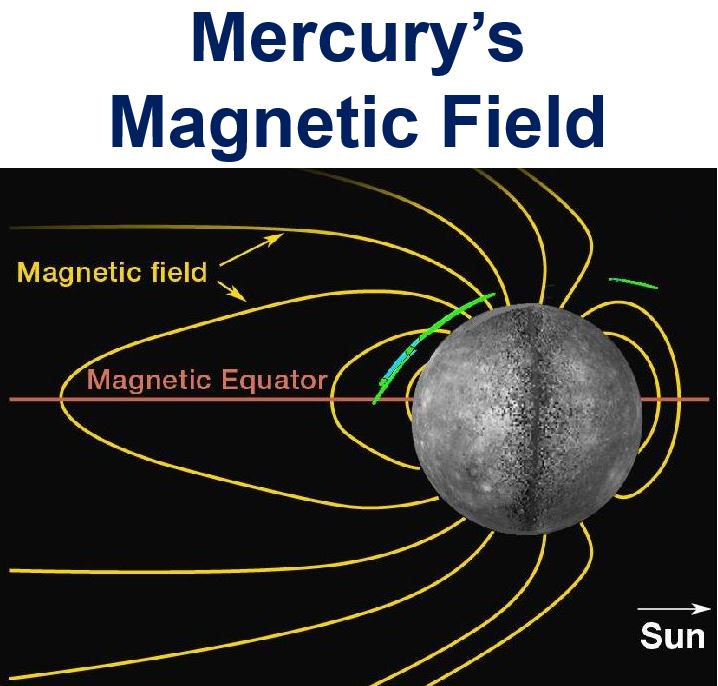Mercury’s magnetic field is between 3.7 and 3.9 billion years old, according to new data from the spacecraft that orbited the Sun’s nearest planet for four years – MESSENGER. Scientists say this discovery helps them piece together the history of our Solar System’s smallest planet.
Before MESSENGER orbited Mercury scientists knew very little about the planet.
NASA’s MESSENGER, a backronym of MErcury Surface, Space ENvironment, GEochemistry, and Ranging, was an unmanned spacecraft which orbited Mercury between 2011 and 2015. It was launched aboard a Delta II rocket in August 2004 to study the planet’s geology, chemical composition and magnetic field.

A cross-section of Mercury’s magnetosphere. (Image: NASA)
The spacecraft has sent valuable data back to scientists.
Scientists from Canada, the US and Russia have written about a study detailing Mercury’s magnetic field in the journal Science Express (citation below). They used data obtained by MESSENGER in the autumn of 2014 and 2015 when the spacecraft was just 15km from the planet’s surface.
Before this period, the spacecraft’s lowest altitudes were between 200km and 400km.
Lead author, Catherine Johnson, a University of British Columbia planetary scientist, said:
“The mission was originally planned to last one year; no one expected it to go for four. The science from these recent observations is really interesting and what we’ve learned about the magnetic field is just the first part of it.”
Scientists have long-known that Mercury has a magnetic field, just like Earth does, but a weaker one. The movement of liquid iron deep inside its core generates the field.
Only Mercury and Earth have a magnetic field in the inner solar system. Evidence points to Mars once having a magnetic field, which vanished about 3 billion years ago.
Mercury’s magnetic field is super ancient
When MESSENGER passed close to Mercury, its magnetometer (an instrument used for measuring magnetic force) gathered data on the magnetism of rocks on the planet’s surface. Those tiny signals showed that Mercury’s magnetic field is extremely old, between 3.7bn and 3.9bn years old.
Mercury and Earth were formed about the same time, just over 4.5 billion years ago.
Prof. Johnson said:
“If we didn’t have these recent observations, we would never have known how Mercury’s magnetic field evolved over time. It’s just been waiting to tell us its story.”
In an Abstract in the journal, the authors wrote:
“Our findings indicate that a global magnetic field driven by dynamo processes in the fluid outer core operated early in Mercury’s history.”
NASA says the following regarding Mercury’s magnetic field:
“Though Mercury’s magnetic field has just 1 percent the strength of Earth’s, the field is very active. The magnetic field in the solar wind episodically connects to Mercury’s field, creating intense ‘magnetic tornadoes’ that funnel the fast, hot solar wind plasma down to the surface.”
“When the ions strike the surface, they knock off neutrally charged atoms and send them on a loop high into the sky.”
Citation: “Low-altitude magnetic field measurements by MESSENGER reveal Mercury’s ancient crustal field,”
Catherine L. Johnson, Roger J. Phillips, Sean C. Solomon, Michael E. Purucker, Brian J. Anderson, Paul K. Byrne, Nikolai A. Tsyganenko, Brett W. Denevi, Joshua M. Feinberg, Matthew A. Siegler, Steven A. Hauck II, James W. Head III, Lydia C. Philpott, Haje Korth, Peter B. James, Erwan Mazarico, Gregory A. Neumann. Science. Published online 7 May, 2015. DOI: 10.1126/science.aaa8720.

